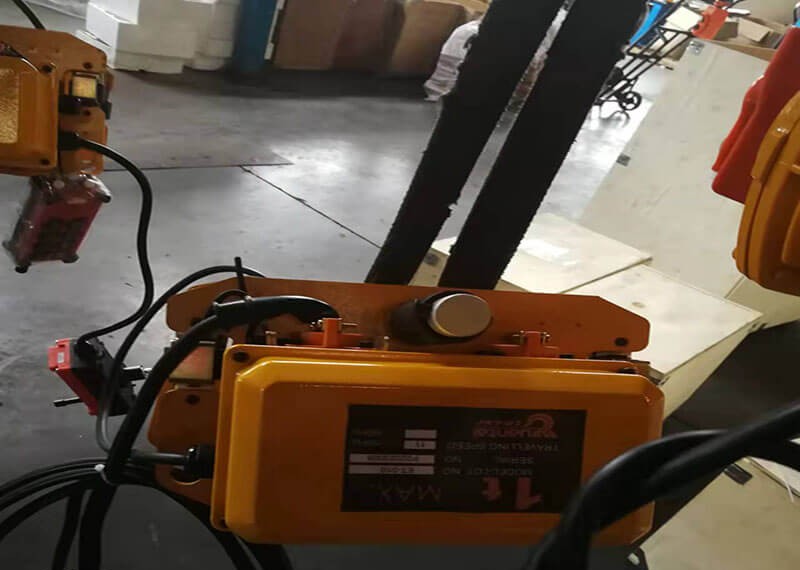
How to deal the electric hoist is noisy when it is running?
The single-beam cranes used in the workshop are equipped with electric hoists as the lifting mechanism. If the electric hoist is running, it is very troublesome. If the electric hoist is noisy, it should be repaired in time. Here are some ways to deal with the noise of the electric hoist for your reference and study.
There are sometimes abnormal noises when electric hoists are running. Many failures of electric hoists, such as control appliances, motors, or reducers, are often accompanied by abnormal noises. The location, height, and tone of these noises vary with the cause of the failure. When overhauling, you should listen and watch more, you can use or according to the characteristics of the fault sound to determine the location of the sound to find and repair the fault.
(1) Abnormal noise occurs on the control circuit and makes a "hum" noise. Generally, the contactor has a fault (such as poor contact of the AC contactor, inconsistent voltage level, stuck magnetic core, etc.), respond to faulty contact The device is overhauled, and must be replaced if it cannot be overhauled. After treatment, the noise will be eliminated by itself.
(2) If the electric hoist motor emits abnormal noise, it should be stopped immediately to check whether the motor is single-phase running, or the bearing is damaged, the shaft of the coupling is not correct, and the "sweeping" faults will cause the motor to make abnormal noises and different faults. The position of the sound and the difference in height and tone are different. When single-phase is running, the entire motor emits a regular "buzzing" sound; when the bearing is damaged, it will emit a "buzz-cock" sound near the bearing. When the shaft of the coupling is not correct, or the motor is slightly sweeping the bore, the entire motor emits a very high "hum" sound, accompanied by sharp and piercing sounds from time to time. In short, according to the difference in noise, the fault should be found, and the maintenance should be carried out one by one to restore the normal performance of the motor. When the motor fault is not dealt with, the use of the hoist is prohibited.
(3) Abnormal noise is emitted from the reducer, and the reducer has malfunctions (such as lack of lubricating oil in the reducer or bearing, worn or damaged gears, damaged bearings, etc.). At this time, the machine should be shut down for inspection. First, determine the reducer of the reducer or Whether the bearing is lubricated before use, and whether the lubricating oil is changed regularly during use. If it is not lubricated as required, the reducer will not only produce excessive humming, but also excessive wear or damage to the gears and bearings. Some people think that the reducer can still operate without adding lubricating oil temporarily or without any serious failure. This idea is wrong. The bearing of the reducer is damaged, similar to the failure of the motor bearing, it will also make abnormal noises near the bearing. In order to prevent the expansion of the fault, regardless of excessive wear or damage of the reducer gear, or damage to the reducer bearing, it needs to be disassembled and repaired or replaced immediately to eliminate the fault and reduce the noise.
When the noise of the electric hoist occurs, it will greatly affect the use, and everyone must pay attention to it to avoid causing more serious failures.


